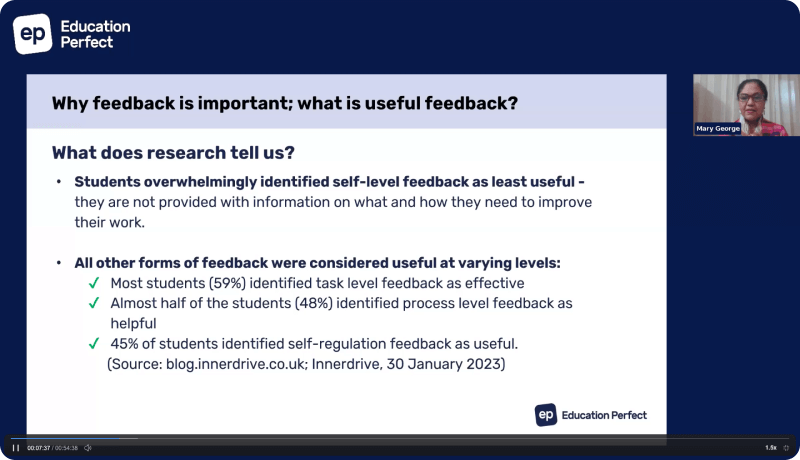Navigating social media to become a better teacher

In this new age of digital device and media saturation, how can you navigate through all the noise to find something worth your time and energy to pursue? This question can be daunting for teachers, even tech savvy ones, if they aren’t familiar with social media. Let’s look at a few teacher specific applications of social media that will make your teaching life easier, not harder.
Most people participate in some form of social media. Whether you pin your favourite interiors on Pinterest as inspiration for your next renovation, scroll through an untold number of photos on Instagram while not watching something that’s on TV or posting a good old fashioned rant on Facebook during local council elections. Most of the above is behaviour exhibited during down time, when the plethora of information available acts merely as a distraction with a dopamine hit when it’s too late to drink coffee and you’re too tired to read a book. If you were to use social media in the workplace, as you use it at home, you would probably find yourself in hot water. So what constitutes legitimate use of social media in relation to work, and, namely teaching?
Let’s take a step back and look at some of the attributes of teaching. In my native country of New Zealand, professional attributes of teachers are set out in the Teaching Council’s Codes and Standards. The code states that teachers have a professional responsibility to show commitment to the teaching profession, while the Standards require teachers to take part in Professional Learning and to develop professional relationships. These attributes, explicitly stated by the New Zealand Teaching Council, are fairly universal around the globe, and they can all be fostered through social media.
Facebook is a natural starting point for teachers’ first foray into using social media to expand upon their professional networks. Most countries or regions have closed Facebook groups dedicated to their area of subject expertise. Since they are closed, moderators can vet members to some extent to ensure they are actually teachers. This means there is more freedom for teachers to express themselves in a professional capacity without much fear of their students getting a hold of something they have said publicly and then taking it out of context. These groups provide a helpful forum to ask the sorts of questions that might be otherwise reserved for the department office. This can be anything from asking for clarifications around curriculum and examination requirements through to suggestions for interesting ways to approach teaching and learning of a particular concept. Most of these groups generate a natural culture of dialogue, with posts being constructively responded to. So if you’re not already a member of your subject’s local Facebook group, get on it now!
For the more confident social teacher, Twitter can open up a global network of teaching expertise. It is a far more publicly oriented platform, with most users opting for public profiles where their tweets are able to be read, theoretically, by any internet user. This changes the way teachers approach it – although, not that much. The key to harnessing Twitter is the use of hashtags – the # that used to be on all phones. Certain hashtags have been assigned to be used for particular themes. Related to my job, for example, I like to follow #MTBoS, the Math-twitter blog-o-sphere. It has lots of Mathematics teaching related content from real practitioners around the world. Within 10 seconds of swiping through the latest tweets, I usually find a link to something really useful and related to something I’m thinking about at the moment. Finding the hashtag that relates to your particular interest can take a while. But #edchat is a good place to start. Or, throw your country tag on the end to see some tweets related to your curriculum For example, #edchatuk if you happen to be teaching in the United Kingdom.
With all this media available you want to make it work for you. Don’t get lost in the seemingly infinite tweets, posts and blogs available. Find something you find interesting, take note and come back to it when new content is posted. Follow some people that challenge your practice in a way that encourages you to improve.
In the recent EPisodes podcast, Use it like you own it, Jimmy Bowens chatted with leading Twitter user Craig Kemp. Craig encouraged teachers to use social media like you own it. I interpret this as engaging with posts and people when they are discussing things that are of interest to you and that might affect what you do in the classroom. A passive approach to social media makes it hard to see the wood for the trees. But engaging with other educators, by replying to their posts and tweets, focuses your attention on the things that will matter to you. It often means you start a dialogue and ideas that were just forming get a chance to be honed and shaped further.
So, if you’re not already a member of your local subject’s Facebook group, search it up and join. If you’re not on Twitter, get on there and follow interesting people like Craig, and search for #WhatIsSchool. Pay attention and engage with what is interesting to you. Let the noise fade into the background, like waves at a beach, and be challenged to improve your practice as a teacher.




